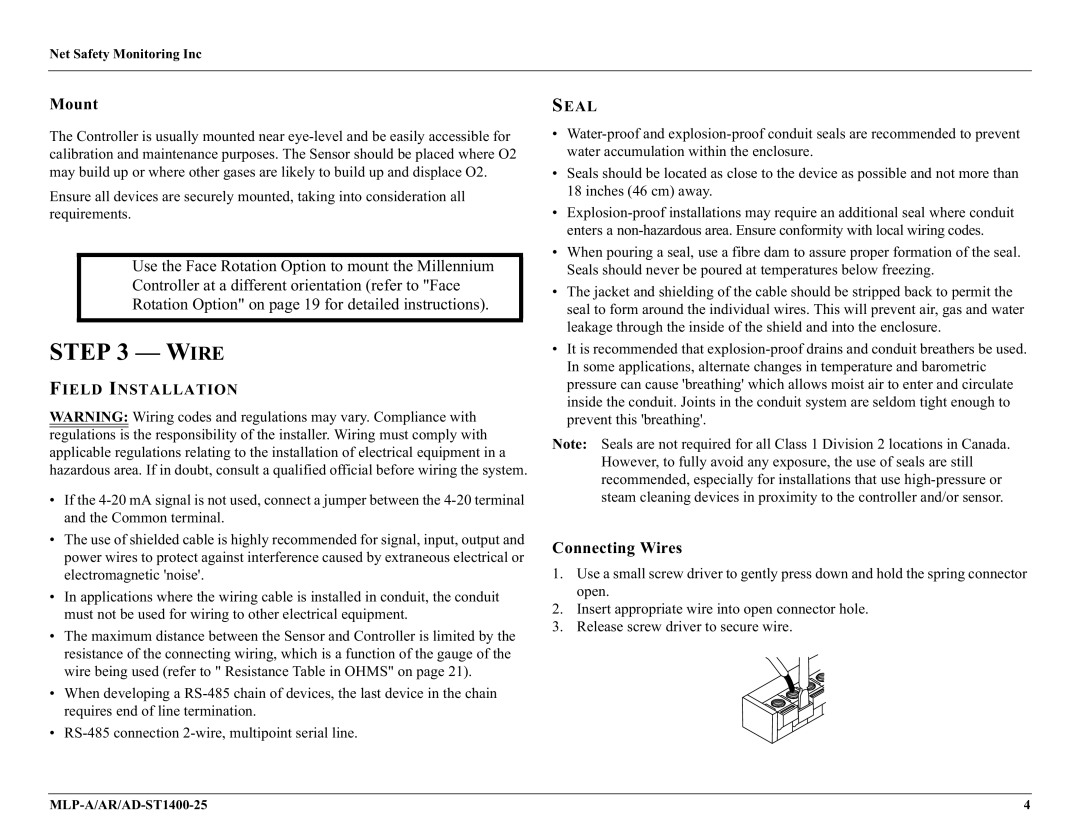
Net Safety Monitoring Inc
Mount
The Controller is usually mounted near
Ensure all devices are securely mounted, taking into consideration all requirements.
Use the Face Rotation Option to mount the Millennium Controller at a different orientation (refer to "Face Rotation Option" on page 19 for detailed instructions).
STEP 3 — WIRE
FIELD INSTALLATION
WARNING: Wiring codes and regulations may vary. Compliance with regulations is the responsibility of the installer. Wiring must comply with applicable regulations relating to the installation of electrical equipment in a hazardous area. If in doubt, consult a qualified official before wiring the system.
•If the
•The use of shielded cable is highly recommended for signal, input, output and power wires to protect against interference caused by extraneous electrical or electromagnetic 'noise'.
•In applications where the wiring cable is installed in conduit, the conduit must not be used for wiring to other electrical equipment.
•The maximum distance between the Sensor and Controller is limited by the resistance of the connecting wiring, which is a function of the gauge of the wire being used (refer to " Resistance Table in OHMS" on page 21).
•When developing a
•
SEAL
•
•Seals should be located as close to the device as possible and not more than 18 inches (46 cm) away.
•
•When pouring a seal, use a fibre dam to assure proper formation of the seal. Seals should never be poured at temperatures below freezing.
•The jacket and shielding of the cable should be stripped back to permit the seal to form around the individual wires. This will prevent air, gas and water leakage through the inside of the shield and into the enclosure.
•It is recommended that
Note: Seals are not required for all Class 1 Division 2 locations in Canada. However, to fully avoid any exposure, the use of seals are still recommended, especially for installations that use
Connecting Wires
1.Use a small screw driver to gently press down and hold the spring connector open.
2.Insert appropriate wire into open connector hole.
3.Release screw driver to secure wire.
4 |
